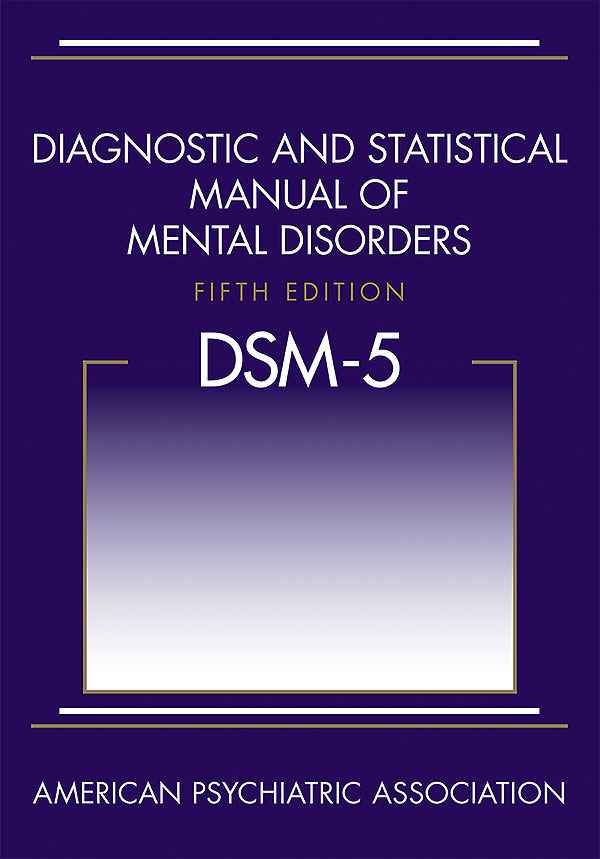Related Research Articles
Paraphilia is the experience of intense sexual arousal to atypical objects, situations, fantasies, behaviors, or individuals.
Neurosis is a class of functional mental disorders involving chronic distress, but neither delusions nor hallucinations. The term is no longer used by the professional psychiatric community in the United States, having been eliminated from the Diagnostic and Statistical Manual of Mental Disorders (DSM) in 1980 with the publication of DSM III. However, it is still used in the ICD-10 Chapter V F40–48.

Hypochondriasis or hypochondria is a condition in which a person is excessively and unduly worried about having a serious illness. An old concept, the meaning of hypochondria has repeatedly changed. It has been claimed that this debilitating condition results from an inaccurate perception of the condition of body or mind despite the absence of an actual medical diagnosis. An individual with hypochondriasis is known as a hypochondriac. Hypochondriacs become unduly alarmed about any physical or psychological symptoms they detect, no matter how minor the symptom may be, and are convinced that they have, or are about to be diagnosed with, a serious illness.
Hypersexuality is extremely frequent or suddenly increased libido. It is controversial whether it should be included as a clinical diagnosis used by mental healthcare professionals. Nymphomania and satyriasis were terms previously used for the condition in women and men, respectively.
Pathological jealousy, also known as morbid jealousy, Othello syndrome or delusional jealousy, is a psychological disorder in which a person is preoccupied with the thought that their spouse or sexual partner is being unfaithful without having any real proof, along with socially unacceptable or abnormal behaviour related to these thoughts. The most common cited forms of psychopathology in morbid jealousy are delusions and obsessions. It is considered a subtype of delusional disorder.

In psychology, an idée fixe is a preoccupation of mind believed to be firmly resistant to any attempt to modify it, a fixation. The name originates from the French idée, "idea" and fixe, "fixed."

Obsessive–compulsive personality disorder (OCPD) is a cluster C personality disorder marked by an excessive need for orderliness, and neatness. Symptoms are usually present by the time a person reaches adulthood, and are visible in a variety of situations. The cause of OCPD is thought to involve a combination of genetic and environmental factors, namely problems with attachment.
Pornography addiction is an addiction model of compulsive sexual activity with concurrent use of pornographic material, despite negative consequences to one's physical, mental, social, or financial well-being. ICD-11 (2022) has recognized compulsive sexual behaviour disorder (CSBD) as an "impulsive control disorder". CSBD is not an addiction, and should not be conflated with sex addiction. The DSM-5 (2013) does not classify compulsive pornography consumption as a mental disorder or a behavioral addiction. Neither does that DSM-5-TR (2022).

Body dysmorphic disorder (BDD), occasionally still called dysmorphophobia, is a mental disorder characterized by the obsessive idea that some aspect of one's own body part or appearance is severely flawed and therefore warrants exceptional measures to hide or fix it. In BDD's delusional variant, the flaw is imagined. If the flaw is actual, its importance is severely exaggerated. Either way, thoughts about it are pervasive and intrusive, and may occupy several hours a day, causing severe distress and impairing one's otherwise normal activities. BDD is classified as a somatoform disorder, and the DSM-5 categorizes BDD in the obsessive–compulsive spectrum, and distinguishes it from anorexia nervosa.
Kleptomania is the inability to resist the urge to steal items, usually for reasons other than personal use or financial gain. First described in 1816, kleptomania is classified in psychiatry as an impulse control disorder. Some of the main characteristics of the disorder suggest that kleptomania could be an obsessive-compulsive spectrum disorder, but also share similarities with addictive and mood disorders.
Sexual addiction, also known as sex addiction, is a state characterized by compulsive participation or engagement in sexual activity, particularly sexual intercourse, despite negative consequences.

Tic disorders are defined in the Diagnostic and Statistical Manual of Mental Disorders (DSM) based on type and duration of tics. Tic disorders are defined similarly by the World Health Organization.
Psychasthenia was a psychological disorder characterized by phobias, obsessions, compulsions, or excessive anxiety. The term is no longer in psychiatric diagnostic use, although it still forms one of the ten clinical subscales of the popular self-report personality inventories MMPI and MMPI-2.
Exposure therapy is a technique in behavior therapy to treat anxiety disorders. Exposure therapy involves exposing the target patient to the anxiety source or its context without the intention to cause any danger (desensitization). Doing so is thought to help them overcome their anxiety or distress. Procedurally, it is similar to the fear extinction paradigm developed for studying laboratory rodents. Numerous studies have demonstrated its effectiveness in the treatment of disorders such as generalized anxiety disorder, social anxiety disorder, obsessive-compulsive disorder, post-traumatic stress disorder (PTSD), and specific phobias.

Dermatophagia is a compulsion disorder of gnawing or biting one's own skin, most commonly at the fingers. This action can either be conscious or unconscious. Those affected with dermatophagia typically bite the skin around the nails, leading to bleeding and discoloration over time. Some people also bite on their skin on their finger knuckles which can lead to pain and bleeding just by moving their fingers. In herpetology, dermatophagia is used to correctly describe the act in which amphibians and reptiles eat the skin they shed, but this is not what occurs in humans. Those diagnosed with this disorder do not develop wounds on the bitten areas of their hands or lose any skin. Instead, they experience a thickening of the skin being repeatedly bitten. Contemporary research suggests a link between impulse-control disorders and obsessive–compulsive disorders, and this was addressed in the DSM-5 when dermatophagia and other related disorders were classified as 'other specified obsessive-compulsive related disorders' and are given the specification of body focused repetitive behavior. Further information on OCD, other anxiety disorders, dermatophagia and other related body focused repetitive behaviors can be found in the DSM-5.

The Diagnostic and Statistical Manual of Mental Disorders, Fifth Edition (DSM-5), is the 2013 update to the Diagnostic and Statistical Manual of Mental Disorders, the taxonomic and diagnostic tool published by the American Psychiatric Association (APA). In the United States, the DSM serves as the principal authority for psychiatric diagnoses. Treatment recommendations, as well as payment by health care providers, are often determined by DSM classifications, so the appearance of a new version has practical importance. The DSM-5 is the only DSM to use an Arabic numeral instead of a Roman numeral in its title, as well as the only living document version of a DSM.
Primarily obsessional obsessive-compulsive disorder is a lesser-known form or manifestation of OCD. It is not a diagnosis in the DSM-5. For people with primarily obsessional OCD, there are fewer observable compulsions, compared to those commonly seen with the typical form of OCD. While ritualizing and neutralizing behaviors do take place, they are mostly cognitive in nature, involving mental avoidance and excessive rumination. Primarily obsessional OCD takes the form of intrusive thoughts of a distressing or violent nature.

Obsessive–compulsive disorder (OCD) is a mental and behavioral disorder in which an individual has intrusive thoughts and/or feels the need to perform certain routines repeatedly to the extent where it induces distress or impairs general function. As indicated by the disorder's name, the primary symptoms of OCD are obsessions and compulsions. Obsessions are persistent unwanted thoughts, mental images, or urges that generate feelings of anxiety, disgust, or discomfort. Common obsessions include fear of contamination, obsession with symmetry, and intrusive thoughts about religion, sex, and harm. Compulsions are repeated actions or routines that occur in response to obsessions. Common compulsions include excessive hand washing, cleaning, arranging things, counting, seeking reassurance, and checking things. Many adults with OCD are aware that their compulsions do not make sense, but they perform them anyway to relieve the distress caused by obsessions. Compulsions occur so often, typically taking up at least one hour per day, that they impair one's quality of life.
Stanley Jack Rachman was a psychologist and Professor Emeritus of the Department of Psychology at the University of British Columbia in Vancouver, British Columbia, Canada.
In psychology, relationship obsessive–compulsive disorder (ROCD) is a form of obsessive–compulsive disorder focusing on close or intimate relationships. Such obsessions can become extremely distressing and debilitating, having negative impacts on relationships functioning.
References
- ↑ Michael Kingham and Harvey Gordon (2004). "Aspects of morbid jealousy". Advances in Psychiatric Treatment. 10 (3): 207–221. doi: 10.1192/apt.10.3.207 .
- ↑ American Psychiatric Association (2013). Diagnostic and Statistical Manual of Mental Disorders (Fifth ed.). Arlington, VA: American Psychiatric Publishing. pp. 263. ISBN 978-0-89042-555-8.
- ↑ Obsessional Jealousy – Morbid Jealousy